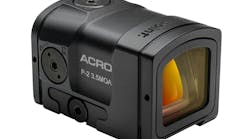What does the future of smart search and rescue look like?
No one knows for sure, but if science is any indication, it just might involve cockroaches with little backpacks
Dogs are nowhere near to being ‘out of the game’ when it comes to their usefulness in helping to find missing people. They have what it takes: obedience, discipline, and a powerful sense of smell. Still, what if [we could up the ante]… make things a little more interesting and even more effective—to save more lives? That’s precisely what researchers at ___ are doing right now to
Last June, [Dr.* David Roberts and Dr.* Albper B___] and their team collaborated with other companies and universities at the ‘Smart America Challenge’, hosted at the White House and organized by the Office of Science and Technology Policy. Their task? To come up with a ‘smarter’ emergency response.
Roberts and B were one of the highlighted teams. One idea they came up with was to make dogs cooperate with ground robots and unmanned air vehicles, mostly simply drones, to search for people after disasters (natural or manmade). This follows along the [line of thining that]..(AB talks about the “internet of things”)
Canine 2.0 or the ‘cyber-enhanced’ working dog
David Roberts is a computer scientist with a background in statistical and machine learning. Simply put, he does data—and thinks about how he can model and infer things from that data. Even so, Roberts says he’s always had an interest and behavior and psychology.
“More recently in my career I’ve been looking at how I can apply algorithms and data to questions of modeling human or in this case, canine behavior,” he says
Robert, Bozkurt., and a third collaborator, Barbara Sherman, a veterinary behaviorist have been working to develop ‘computer mediated communications between dogs and handlers.’ The idea is twofold: First, in many settings dogs work off-leash, sometimes at a great distance from handlers, and are somewhat limited by their environment. Second, dogs and humans communicate in very different ways. Roberts says they are looking to technology to help bridge that gap using technology.
Their solution is Canine 2.0. Canine 2.0 is based on a ‘smart harness’ comprised of a CBAN—Canine Body Area Network. CBAN is packed with sensors that monitor a dog’s environment and wellbeing (sending alerts to a cellphone), and even send signal from the handler back to the four-legged helper.
“With smart harness we started with inertial measurement units, similar to the one used on smartphones when the phone rotates, the screen rotates,” says Bozkurt, ____. “We put those on the dogs and it tells us remotely when the dog goes through different postures; it remotely tells us what the current status of the dog is.” It is similar to a physiologic sensor/exercise monitoring device for humans—only for dogs.
The brains of the smart harness is a small box about the size of a deck of cards called a ‘beagle bone black*, a fully functioning computer powerful enough to handle all communication need and send real-time video and audio back to handlers.
“The things that we’re more excited about…is the suite of tech that we use for monitoring the dog itself. They fall into two categories: we have inertial measurement units that we use for posture and positional monitoring so we can determine whether a dog is sitting versus standing versus walking, running…standing up on two legs, going uphill, downhill, standing still…using these inertial measurement units—data gets sent back to the computer and we have implemented algorithms that can differentiate between these different postures and movements,” says Roberts.
For now, Canine 2.0 is a research prototype and the work Roberts and Bozkurt are conducting is through a three-year NSF grant. (They are actively seeking funding to extend beyond the three years, including partners in the Search and Rescue arena).
Sending biobots to the rubble
But canines aren’t the only nonhumans getting outfitted for rescue missions. What if, at the scene of a giant mass casualty explosion, you could send tiny searchers into the nooks of heavy debris? Enter the biobot—or live cockroaches that are remotely controlled.
“When we were trying to build insect based technologies to carry little sensors our motivation was, there are a lot of situations where we don’t have robots commercially available to do stuff for us, and in that case we look at nature and try to find out how this problem is being solved in nature,” says Bozkurt. He quips unlike dogs, cockroaches and other insects can be difficult to train.
“Basically we are right now trying to use an insect as a beast of burden where it carries a tiny sensor for us,” says Bozkurt. The sensor is essentially a tiny backpack weighing one to five grams. Cockroaches, with their exoskeleton, are ideal for the task. They are also not too fast, not too slow—which means they can be controlled more easily. In addition, the backpacks have a rechargeable batteries and a tiny solar panel. An invisible fence as the insect making U-turns to get into a certain parameter (with light sources) and re-charge.
“We talked to the entomology department here, and we found out that there were 20 different kinds of species available of cockroach species, and they gave us different speeds, different locomotion, different payload capacities and we picked one that is perfect for us,” says Bozkurt. It ended up being the Madagascar hissing cockroach—a species some more adventurous spirits actually keep as pets.
The little workers are fitted with a camera and controlled via a computer with depth sensor and night vision capability. Another sensor inside the backpack contains a microphone. “The idea is under the rubble you cannot see much, so cameras are not as useful…so microphones can sort of search or listen for help calls.
“The backpack is a radio, so think about not just one insect, but hundreds of insects walking on the rubble; they each carry a radio and these radios can talk to each other,” says Bozkurt.
A smartphone user can localize himself or herself using triangulation; a similar technique is used to localize the insects. The tiny insects wall around, carrying their sensors, and give handlers their locations tag—which provides information about what is under the rubble.
“We can localize them we can sort of know where those tunnels are and then you have a sensor on their backpack, a tiny microphone where they get an imported signal. On the map you can mark that location say, ‘oh, there’s someone asking for help here, or there’s gas leakage here, etc.,” says Bozkurt.
But….insects…. really?
Bozkurt is convinced of the possibilities.
“If you’re asking why not robots but cockroaches, the basic answer is we don’t have robots that can walk under the target applications that we have in our agenda right now is search and rescue after disasters. There were a couple of efforts before to build centimeter scale or inch scale robots that can go under the rubble, but none of them worked reliably and insects can find their way, go through different gaps and holes under the rubble very easily and they are self-propelled. We don’t need to power their actuators and they can avoid dangerous situations.”
Like dogs, cockroaches have a self-preservation instinct that robots don’t have, which makes them an ideal platform and a compliment to their human [counterpart].
Someday “four-legged search and rescue companion” may means something entirely different.



